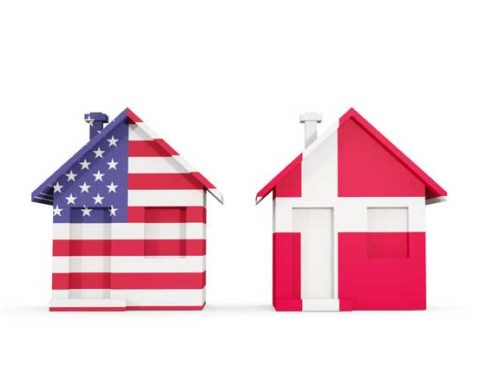When you’ve been an international in Denmark for a while, as I have, you sometimes forget what it was like to arrive here for the first time and know nothing.
I remember arriving just about this time of year and being astonished by all the public holidays in spring. I’d arrived to work, but the office kept shutting down.
Now one of my various gigs is cultural training for newcomers, paid for by the big corporations that bring them here. The questions they ask bring me back to the time when I first arrived.
One of the most popular questions is pretty basic: How do I send a letter in Denmark? What does a postbox look like? Where do I buy a stamp?
Postbox Red
First of all, you can buy a stamp through your phone. Denmark is a highly digitalized society, you rarely use cash for anything, and you can pay to mail your letter through an app. It will give you a nine-digit code that you write in the space where the stamp usually goes.
Then you drop it off in one of the red postboxes that can still be found around Denmark, even though the Swedes took over the postal service a few years ago and repainted everything else to do with the post office Swedish blue, including the carriers’ uniforms.
The red post boxes survived, maybe out of nostalgia. You will frequently hear Danes describe a color as “postbox red.”
The Swedes also sold off all the good real estate that Denmark’s post offices used to occupy, so Denmark doesn’t have post offices any more. If you want to send a package that can’t fit in the postbox, you take it to a special counter in one of the big supermarkets.
“Will it be possible for me to get a bike?”
Another aspect I get a lot of questions about is bicycle culture, which the Danish government promotes so heavily in its tourist campaigns.
A nice man from Russia asked me: Will it be possible for me to get a bicycle in Denmark? I said yes, it would. But hey, there are no dumb questions. (Would it be possible for me, Kay, to get a bicycle in Moscow? I have no idea.)
Bicycle culture is often exaggerated in Denmark – the truth is, the number of kilometers cycled each year keeps falling, and the number of cars keeps increasing.
You can still get by with only a bike in Aarhus or Copenhagen – I do – but in the less urban parts of Denmark, life will be uncomfortable without a car.
A very green office
Other questions newcomers ask me. A fashion-forward man in the construction business wanted to know if he could wear fingernail polish to the office. I told him…you could, but even Danish women generally don’t wear bright fingernail polish to the office, so you would really stand out.
Denmark is not a country where people like to stand out. Denmark is a country where people like to fit in.
One way to fit in here is to show how environmentally conscious you are. It’s the closest thing to a contemporary religion. In particular, Danish companies love to show off how green they are.
One newly-arrived executive was exasperated by her Danish company’s no-paper policy. She wanted to write some things down.
I visited her office and there really was no paper anywhere. There were no printers. No paper at all.
How do I get my kids into the best schools?
But the main question I get from newcomers shows the difference between Danish culture and many of the cultures that these international high achievers come from.
They want to know how to find the best schools, get their child on the achievement ladder. They ask me: How do they get into the best primary school so they can get into the best secondary school so they can get into the best university?
Denmark doesn’t really work like that. Schools here emphasize emotional intelligence and group work. Grades are not really important until age 14 or 15, and they don’t really influence university admission until the last two years of secondary school, around age 17 or 18.
Some primary schools are certainly better than others, and it’s worth finding one that suits your child, but it’s more about the social environment and the way the teachers, students, and parent group works together to provide a good atmosphere for learning.
Individualistic society vs group-oriented society
And this is really the key thing newcomers to Denmark need to learn, in particular if they want to build a life here. You have to learn the difference between living in an individualistic society and a group-oriented society.
Sometimes I see people who have just arrived post things online like How can I maximize my investments while living in Denmark? and the answer is, you don’t. Here we all put in and we all take out. It’s not about maximizing the individual. It’s a group oriented society.
I see this conflict a lot when it comes to using the Danish public health service. I’ve seen internationals who are very angry that they can’t call up and get a doctor to see them right away, even on the weekend. This is not a commercial system and you are not a customer. It’s about the best treatment for the largest number of people, not your preferred treatment for you as an individual.
Moving from the individual way of thinking to the group way of thinking may be one of the biggest changes a newcomer will have to make in order to survive and thrive in Denmark.




